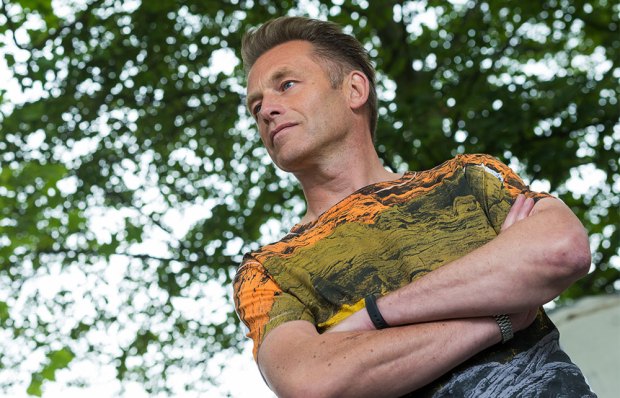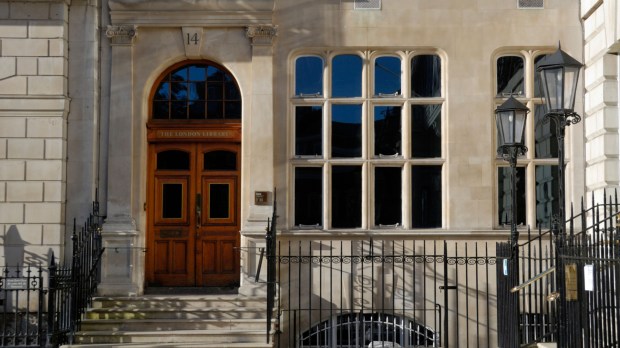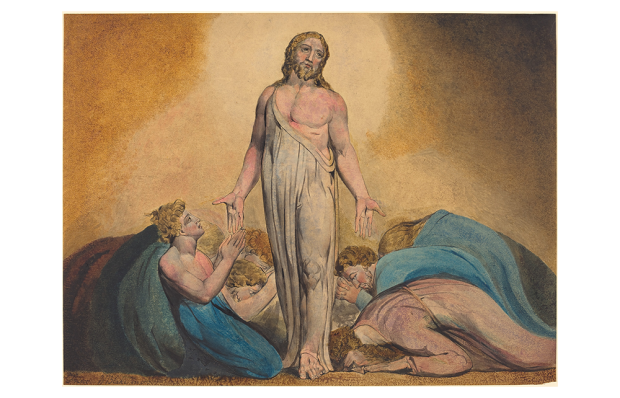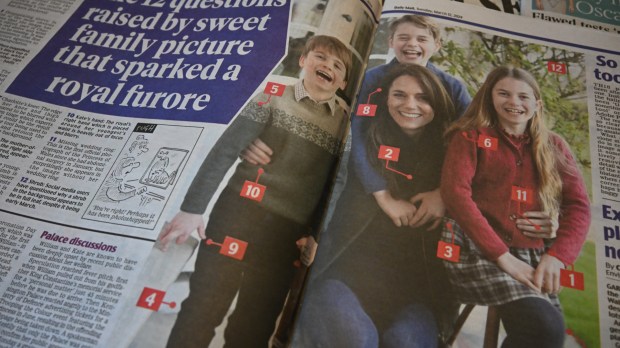Rarely does a piece of journalism bring a tear to my normally cynical eye, but I did find this happening when I read Tom Woodman’s piece (‘You must be kidding’) in last week’s edition. He and his wife would not have children, he wrote, because climate collapse means that ‘I can’t give them a future’. What made me weepy was his combination of obvious decency and utter mistakenness. How tragic that what he called ‘the facts and figures’ — in reality, contentious projections — have persuaded this couple that no little Woodman must come into the world. ‘Tree,’ I felt like shouting, in reversal of the Green order of priorities, ‘spare that Woodman!’ Tom, the non-father, complains ‘Humans are swiftly making the planet uninhabitable’, yet goes on to quote figures of population increase which prove that it has become more habitable than ever (5.2 billion 35 years ago; 7.8 billion today). Of course, it could all go wrong, but that is unknowable. Mr Woodman adds that he cannot offer his imagined children ‘safety, reassurance and the promise that everything will be all right’. Of course he can’t. Nor can any parent, ever. No one can guarantee to his children what the next 80-plus years will be like, even in their own home, let alone in the wider world. The phrase ‘One day, my boy, all this will be yours’ is a boast, not a statement of fact. To bring a child into the world is always to take an incalculable risk, but then the benefits of love and life are incalculable. The benefits of nonexistence are, obviously, nonexistent.
Suppose, though, that millions follow the example of the Woodmans. Who will benefit? If, as is the case at present, the voluntary non-parents come mainly from the West, western civilisation will decline faster than ever. Future generations of white post-Christians will struggle on, perhaps in declining tribal reservations, observed by tourists. People who produce more children will inherit the earth, and deserve to do so. In terms of the balance of power, the only upside from the western, democratic point of view, is that China is also in demographic trouble. The cruel one-child policy of the Chinese Communist party has weakened the balance of the population and threatens prosperity. China’s fairly recent move to a two-child policy has not nearly reversed the declining trend. So other powers — India? — may outstrip China, which would be welcome. On the other hand, the one-child policy, which began in 1979, produced a couple of generations of only children and led to an unusually high proportion of boys being born. These must be very lonely cohorts, with too many little emperors who lack understanding of the needs of others and hunger for world power. So the next 20 years must seem to them like the window of opportunity for Chinese world domination.
Recently, our daughter was concussed and had to go to hospital — three hospitals, actually, by the time the first had let her out too early, and the second had felt it lacked the capacity to treat her. She is now out, and in the end, despite her premature discharge, did get medical attention. But the other aspects were pretty stupefying. The most anxious time was when, having been discharged and come home to us in the country, she started falling and vomiting during the night. We rang 999 and were told that it would be a seven hours 45 minutes wait for an ambulance. A ‘clinician’ later rang us and corrected this to ten hours. He said we should take her in to A&E ourselves at once. We were reluctant to do this, since she could hardly move and we knew how stressful she would find the enormous, sleepless night-time wait in casualty. After cross-questioning the clinician, I realised that he had to advise us to take her in, not because this was necessarily best for her, but because no other suggestion could cover his back if things went wrong. Eventually, with our daughter’s consent, we decided to wait till morning for her to gather strength, and took her to A&E then. There we waited with her for seven hours, even though the room was not crowded. The patient beside us was sick on the floor and no one cleared it up. Our daughter stayed in for the night, kept in a sort of holding bay, not a ward.
The next day, it was decided to transfer her to the Royal Sussex County Hospital in Brighton, but such was the administrative confusion that she did not get into a ward bed there until 4 a.m. From then on, for two days, she lay for many hours with nothing happening. Eventually, after tests, it was decided that she could be safely discharged, but it took more than a day for this to be implemented. Going to pick her up, I waited for two more hours for the discharge papers and test results, and then a further hour for a referral that had been promised in ‘five minutes’. The hospital itself is a tottering parody of architectural atrociousness. Behind the small, battered original Regency building which faces the sea rises an extraordinarily tight, ugly set of modern additions which are almost unnegotiably labyrinthine and, in the middle, a multi-storey carpark for which there is a permanent queue. Workmen’s hoardings and bollards drive patients into the path of the waiting cars. In the old bit, I passed a wooden board commemorating the visit, in 1833, of King William IV and Queen Adelaide. Their Majesties, it said, ‘condescended to visit the Hospital and, after minutely inspecting every department, were graciously pleased to express their entire approbation of the manner in which it was conducted’. Nearly two centuries on, medicine has advanced light years, yet no truthful royal couple — or humble patient — could possibly offer a comparable endorsement.
A Catholic priest seeking to give the last rites to the stabbed Sir David Amess was blocked by the police because, they said, that would disturb a crime scene. Thus was the faithful Sir David prevented from dying as he had lived.
Got something to add? Join the discussion and comment below.
Get 10 issues for just $10
Subscribe to The Spectator Australia today for the next 10 magazine issues, plus full online access, for just $10.
You might disagree with half of it, but you’ll enjoy reading all of it. Try your first month for free, then just $2 a week for the remainder of your first year.















Comments
Don't miss out
Join the conversation with other Spectator Australia readers. Subscribe to leave a comment.
SUBSCRIBEAlready a subscriber? Log in